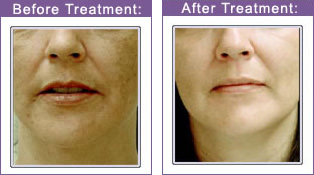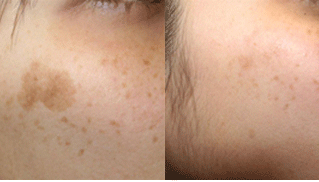|
Online shopSearchShoping cart |
Pigmentation Lesions Removal
Q-Switched ND:YAG Laser – most effective treatment for Pigmentation and melisma removal
What causes skin pigmentation? Usually skin pigmentation or hyperpigmentation is caused by the melanin-protective system being overwhelmed. When this happens, excess melanin is produced, resulting in dark pigmentation marks. Common causes of skin pigmentation include:
Types of skin pigmentation Most skin pigmentation is one of the following:
Q-switched lasers are the treatment of choice for pigmentation problems of the skin. It gives much better results than IPL. The main feature of this laser is that it has extremely short pulses of high power that can be shorter than 20 nanoseconds (one nanosecond equals one billionth of a second). This allows this laser to have a photo-mechanical effect on skin pigmentation and tattoo inks or pigments, literally shattering these small particles. Parts of them will be bounced out of the skin, and the remnants will be removed by the body's immune system. The depth of the pigmentation will determine the laser wavelength used. For more superficial pigmentation problems such as sunspots, solar lentigos, cafe-au-lait spots, freckles it may require the 532nm q-switched KTP. Deeper pigmentation problems such as Naevus of Ota, melasma/chloasma, and Hori's Naevus may require the 1064nm q-switched Nd:YAG. |









